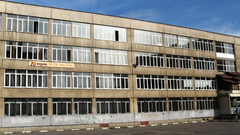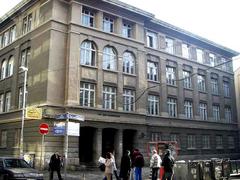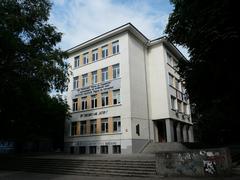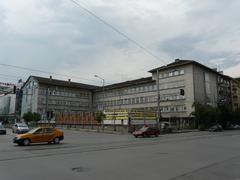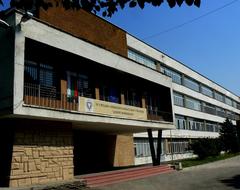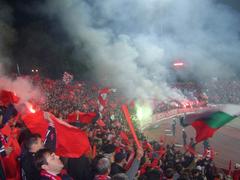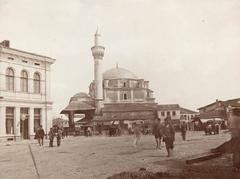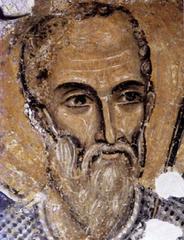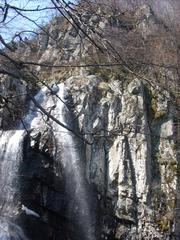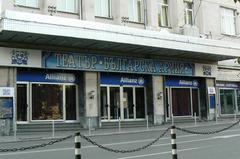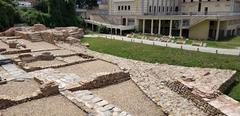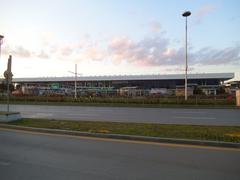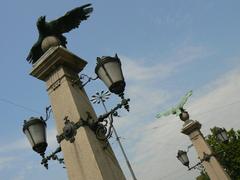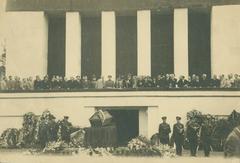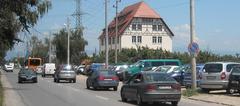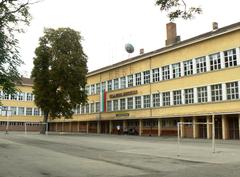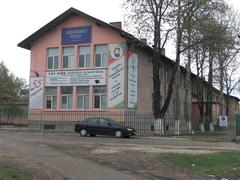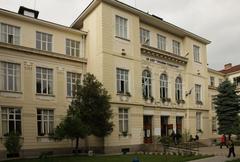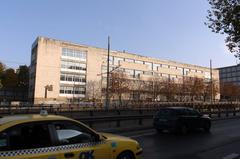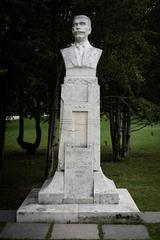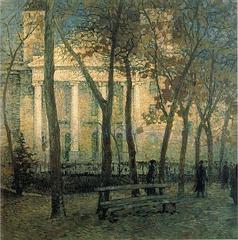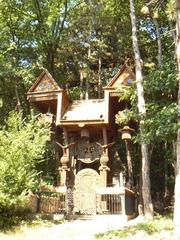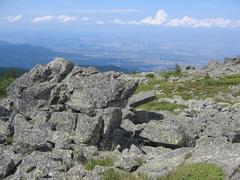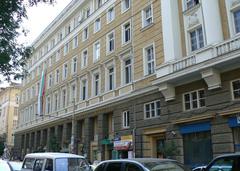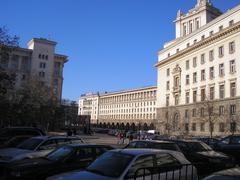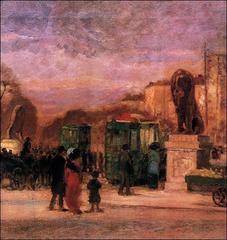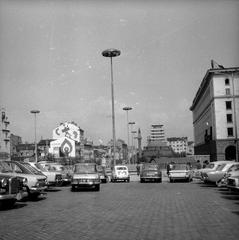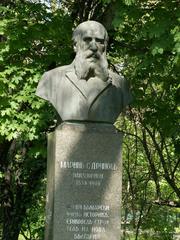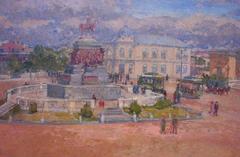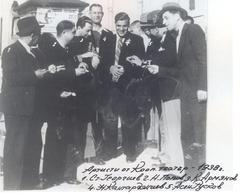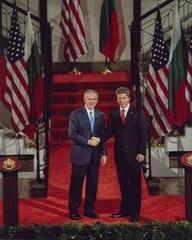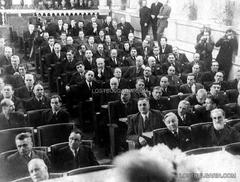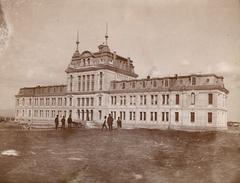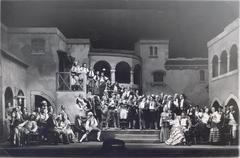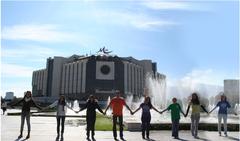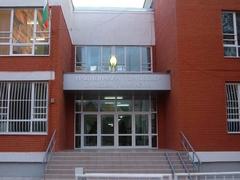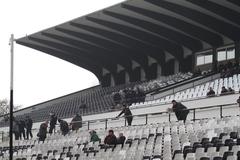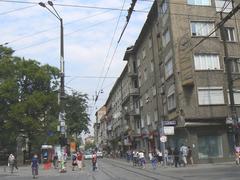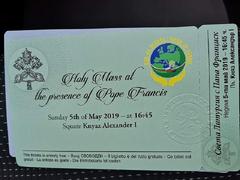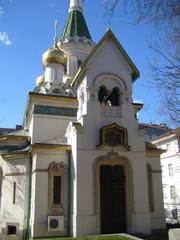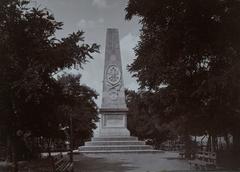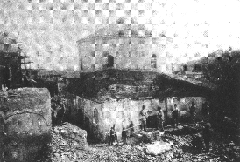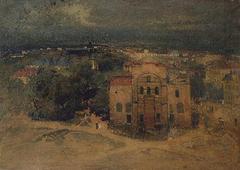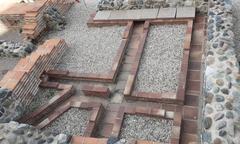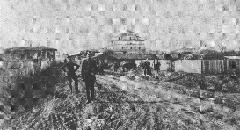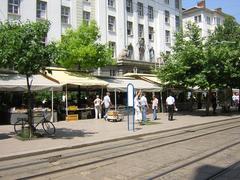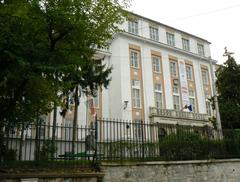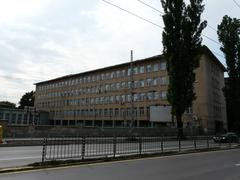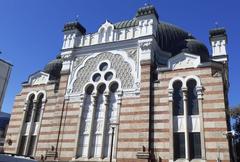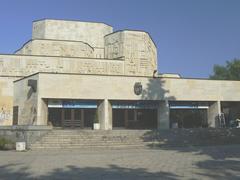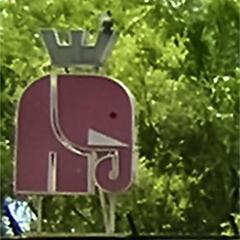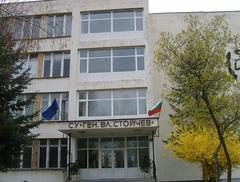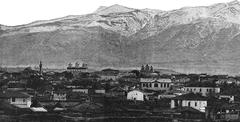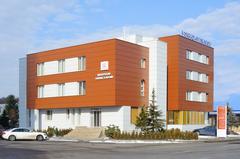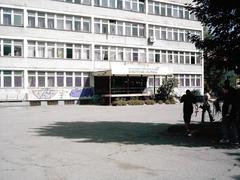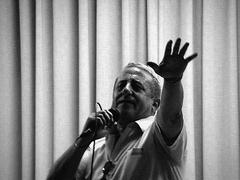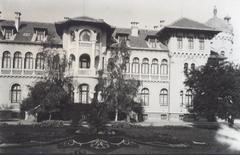Visiting 140 Средно Училище „Иван Богоров“ Sofia, Bulgaria: Guide, Tickets, Hours, and Tips
Date: 14/06/2025
Introduction
140 Средно Училище „Иван Богоров“ (140th Secondary School “Ivan Bogorov”) in Sofia stands as a dynamic intersection of educational innovation, cultural heritage, and community life. Established in 1986 and renamed in 1993 after Dr. Ivan Bogorov—Bulgaria’s pioneering journalist and linguist—the school honors national traditions while championing contemporary, inclusive education. Beyond its academic mission, the school invites visitors to experience Bulgarian culture firsthand, featuring a renowned ethnographic museum, vibrant folk art murals, and acclaimed performing arts ensembles. Adjacent to the school is the distinctive Ivan Bogorov Monument, a striking mosaic and sculptural ensemble that celebrates Bulgaria’s linguistic heritage (140 SU Ivan Bogorov Wikipedia, School profile on Uchilista.bg).
This comprehensive guide covers the school’s history, cultural and educational significance, visitor logistics, accessibility, and opportunities to engage with Bulgaria’s living traditions.
Table of Contents
- Introduction
- Historical and Cultural Legacy
- Educational Innovation and Specialization
- Cultural Impact and Community Life
- The Ivan Bogorov Monument
- Visitor Information
- Travel Tips
- Frequently Asked Questions (FAQ)
- Conclusion and Final Tips
- References and External Links
Historical and Cultural Legacy
Naming and Historical Evolution
Founded in 1986 and originally named after Hristo Kabakchiev, the school was renamed in 1993 to honor Dr. Ivan Bogorov—a leading figure in Bulgarian journalism and linguistics. This renaming underscores the institution’s dedication to the preservation and promotion of Bulgarian language and cultural identity (140 SU Ivan Bogorov Wikipedia).
Ethnographic Museum
Established in 2004, the school’s ethnographic museum displays artifacts donated by parents and staff, serving as a living archive of Bulgarian folk traditions. The museum is a focal point for cultural events and intergenerational dialogue (140 SU Ivan Bogorov Wikipedia).
Artistic and Architectural Enrichment
Since 1994, murals depicting Bulgarian folklore and contemporary themes have adorned the school’s walls, contributing to an immersive and inspiring educational environment (140 SU Ivan Bogorov Wikipedia).
Educational Innovation and Specialization
Curriculum and Profiles
The school offers a balanced curriculum emphasizing both humanities and natural sciences. In 1992, choreography focusing on Bulgarian folk dance was introduced, evolving into a full-fledged “Arts” profile by 2001 (School profile on Uchilista.bg).
Inclusive Education
With dedicated resource teachers, psychologists, and medical professionals, the school supports over 115 students with special educational needs. Inclusive arts and creative activities are integral to its educational approach (Forum on Inclusive Education).
Facilities and Resources
Facilities include three computer labs, multimedia rooms, three dance studios, two gyms, a library, a bookstore, a canteen, a buffet, and an indoor swimming pool (Swimming Pool Details).
Cultural Impact and Community Life
Performing Arts Ensembles
The “Връбниче” (Vrabniche) dance troupe and vocal group, established in 1988, have received numerous awards and serve as cultural ambassadors at both national and international events (140 SU Ivan Bogorov Wikipedia).
Festivals and Public Events
Annual forums like “Education-Arts: Perspectives for Development” bring together educators and artists, while festivals and open performances foster community engagement (Forum details).
Multicultural Integration
Located in the Obelya 2 district, the school promotes multiculturalism through foreign language programs (English, German, Russian) and offers integrated education support (140 SU Ivan Bogorov Wikipedia).
The Ivan Bogorov Monument
Description and Significance
The Ivan Bogorov Monument, established in 1986, is a mosaic and sculptural installation on the school’s facade. Crafted with limestone tesserae and patinated materials, it exemplifies the “decorative plastic lining” style and visually celebrates Bulgaria’s linguistic legacy (Ivan Bogorov Monument on Sofia Cultural Heritage).
Accessibility and Special Events
The monument is accessible during school hours (8:00 AM–6:00 PM, weekdays). While it does not host independent events, its location within the active school campus means visitors may often encounter live performances, exhibitions, and cultural activities (school history).
Nearby Attractions
Within a short drive, visitors can reach the Boyana Church, the National Museum of History, and Vitosha Mountain (Obelya 2 map).
Visitor Information
Hours, Admission, and Tours
- School and Museum Hours: Monday–Friday, 8:00 AM–5:00 PM.
- Monument Hours: Open during school hours; exterior accessible at all times.
- Admission: Free. Advance arrangement is recommended for group tours or museum visits.
- Guided Tours: Book through the school administration (official website).
Location and Transportation
- Address: Diko Iliev Str. 9, Obelya 2, Sofia
- Public Transport: Bus lines 111 and 310 stop nearby. The site is easily reachable from central Sofia.
- Parking: Street parking available; may be limited during busy hours.
Guidelines and Accessibility
- Check-in: All visitors must check in at the main entrance with photo ID.
- Accessibility: Wheelchair accessible with ramps and wide corridors. Contact the school for specific needs.
- Photography: Allowed, but respect student privacy and school regulations.
- Other Rules: No smoking or alcohol on the premises.
Travel Tips
- Plan Ahead: Contact the school to arrange guided tours, especially for the ethnographic museum and murals.
- Combine Visits: Pair your school and monument visit with nearby Sofia attractions for a richer cultural experience.
- Best Times: Visit on weekday mornings to avoid school events and enjoy a quieter atmosphere.
- Virtual Tours: Explore digital resources and virtual tours on the Sofia Cultural Heritage website.
Frequently Asked Questions (FAQ)
Q: What are the visiting hours?
A: Monday–Friday, 8:00 AM–5:00 PM for the school and museum. The monument’s exterior is accessible at all times.
Q: Is there an admission fee?
A: No, admission is free.
Q: Are guided tours available?
A: Yes, arrange in advance via the school administration.
Q: Is the site wheelchair accessible?
A: Yes, including ramps and accessible restrooms.
Q: Can I attend cultural performances?
A: Yes, many events are open to the public; check the school’s news section for schedules.
Q: Is photography allowed?
A: Yes, but respect school guidelines and students’ privacy.
Conclusion and Final Tips
Visiting 140 Средно Училище „Иван Богоров“ and the adjacent Ivan Bogorov Monument provides an in-depth encounter with Bulgarian educational philosophy, linguistic heritage, and vibrant folk traditions. The school’s inclusive approach, artistic environment, and community festivals reflect the nation’s ongoing commitment to cultural preservation and educational excellence. With free, accessible admission and convenient transportation, it is a rewarding stop for both local and international visitors. For the best experience, book a guided tour and attend a live performance or festival. Extend your itinerary by exploring other Sofia landmarks and enjoy digital resources and updates through the Audiala app and the school’s social media channels (Sofia Cultural Heritage, 140th Secondary School “Ivan Bogorov” Official Website).
References and External Links
- Ivan Bogorov Monument on Sofia Cultural Heritage
- 140th Secondary School “Ivan Bogorov” Official Website
- Sofia Public Transport Information
- Sofia Tourism Portal
- School profile on Uchilista.bg
- Forum on Inclusive Education
- Swimming Pool Details
- Obelya 2 map
- Bulgarian Ministry of Culture
- Sofia Urban Mobility Center
